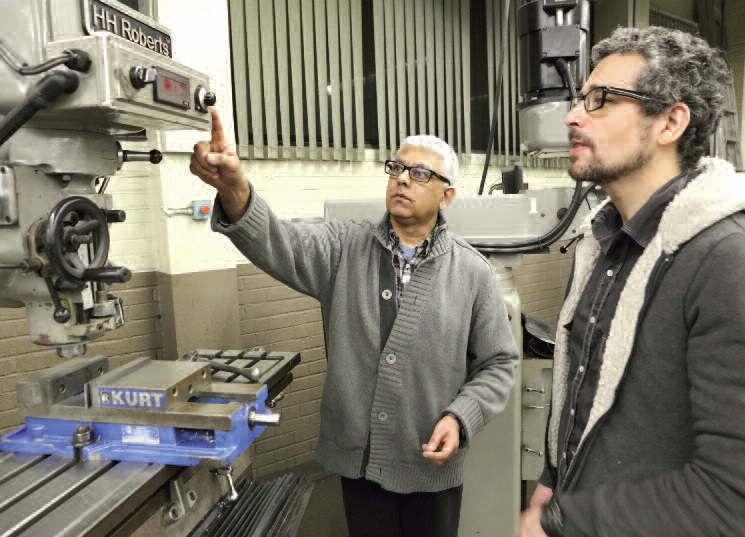STAFF WRITER
The Ontario Construction Report Special Feature
A productive partnership between the University of Toronto (U of T) and George
Brown College is equipping U of T students with much needed technical expertise, and
providing George Brown students with the knowledge, skills and experience they need to excel in the workforce.
For the past several years, the Centre for Construction and Engineering Technologies
has been contributing to a variety of applied research projects in collaboration with U of T’s Institute for Aerospace Studies, which is part of its Faculty of Applied Sciences and Engineering. Opportunities to help develop everything from remote controlled aircraft to autonomous
drones to medical research nanosatellites have been made available to final year students
in the following programs within the School of Mechanical Engineering Technologies:
Mechanical Engineering Technology — Design, and Mechanical Technician — CNC and Precision Machining.
For U of T, the partnership allows access to the extensive technical expertise of George Brown faculty and students, which complements their theoretical knowledge and makes it possible to execute their projects, many of which are being conducted for industry partners. As well, they are able to use leading edge computer-aided manufacturing software, and the college’s comprehensive machine shops, electrical and process engineering labs, and robotics facilities
at the college, which include equipment such as CNC lathe and milling centres, welding and cutting machines, and 3D printers.
For George Brown students, they are getting to apply their training in a practical, hands on way by contributing to actual engineering projects. By helping U of T students refine their designs, they make them more practicable. They also help develop components for different parts of devices, and advise on how to manufacture them with easy to access equipment and within a reasonable timeframe. As part of their effort, the students earn cooperative education
credits for their involvement with the projects. Over the years, George Brown students have contributed to a variety of projects, including rocket engines, unmanned aerial vehicles and formula race cars.
The value of the applied learning format of the training within the School of Mechanical
Engineering Technologies, which includes a wealth of technical expertise and advanced machining facilities, is that it can complement the theoretical education engineering
students receive at U of T. To that end, many sign up for the school’s Mechanical Techniques summer program, where they can learn about topics such as engineering drawing, solid
modeling, precision and CNC machining, and welding. The students gain real world experience through participation in production design projects, and develop the hands on skills and industry knowledge that are relevant to their field.
What all of this collaboration and applied research experience means for local engineering and manufacturing organizations is the opportunity to access a highly skilled and work ready talent pool at George Brown. Indeed, program coordinator Pradeep Kalsi confirms that the industry demand for students within the partnership associated programs is consistently strong, and most find work in their field very soon after they graduate.
“This partnership essentially provides field education for our senior students,” Kalsi says. “It features the kind of activity and collaboration that will make our students valuable to companies when they graduate, because they will be able to tackle projects without hesitation.”

